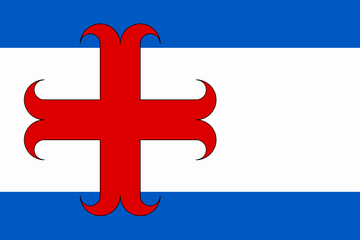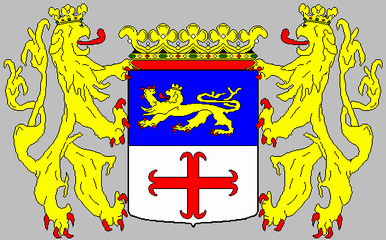History
Zutphen received city rights between 1190 and 1196, making it one of the oldest cities in the country. Only Utrecht, Groningen and Deventer preceded Zutphen in receiving city rights. Zutphen, in turn, granted city rights to several other cities, such as Arnhem, Doetinchem, Lochem and Harderwijk. In the Middle Ages, Zutphen was the seat of a line of counts, which became extinct in the 12th century.
One of the largest and oldest churches of the country, the St. Walburgis (Saint Walpurga) church, which dates from the 12th century and contains monuments of the former counts of Zutphen, a 13th century candelabrum, an elaborate copper font (1527), and a fine modern monument to the Van Heeckeren family. The chapter-house ("Librije") contains a pre-Reformation library which includes some valuable MSS. and incunabula. Unique is that these old books are chained to the ancient wooden desk they lay on.
1649 map of Zutphen in Willem and Joan Blaeu's "Toonneel der Steden"Having been fortified the town stood several sieges, specially during the wars of freedom waged by the Dutch, the most celebrated fight under its walls being the one in September 1586 when Sir Philip Sidney was mortally wounded. Taken by the Spaniards in 1587 by the treachery of the English commander Rowland York, Zutphen was recovered by Maurice, prince of Orange, in 1591, and except for two short periods, one in 1672 and the other during the French Revolutionary Wars, it has since then remained a part of the Netherlands. Its fortifications were dismantled in 1874.
The old center survived the Second World War almost entirely, though some parts of the city were lost, especially the area around the railway station, in the northern part of the city center, known as the Nieuwstad (English: New City). The city center includes many monumental buildings dating back to the 16th and 17th centuries. There are also remains of the old town walls in several places.
Source: http://en.wikipedia.org/wiki/Zutphen
  |
|

